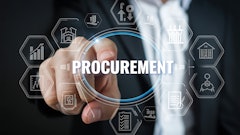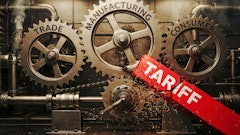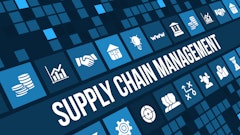
Procurement has always operated within a changing landscape. But, in recent years, developments in the supply base have been nothing short of unprecedented.
As if a global pandemic was not enough to contend with, the world has finally started to focus on sustainability and climate change and these recent developments are transforming much of our supply base.
It’s not just individual suppliers that are changing but entire industries. Those sectors where people get close to each other were brought to their knees in 2020. Airlines, performing arts and venues were dealt the toughest blows, and although many have bounced back, such industries will continue to have a tough job making people feel comfortable being near others without a complete redesign of operations.
Aviation has been the slowest to begin to recover as its demand profile has completely changed. A large part of the need for business travel has evaporated as corporations found they could manage without it. Add to that the continued likelihood of restrictions on international travel as the Coronavirus disease (COVID-19) variants emerge and subside. Then there is the need to address the global emissions produced by aviation, emissions that are more impactful as they occur in the atmosphere. Expect companies to start taking this seriously, especially if they face a future carbon tax for business travel impact. Despite all this, there remains a bright future as demand to travel will prevail. Perhaps future aircraft will run on sustainable aviation fuel with new forms of propulsion, cabins that hold fewer passengers and strict health passports required to move across borders. A new dawn of sustainable air travel will rise. While the light from some industries grows dim, others will adapt and re-emerge and there are green shoots of entire new industries seizing the opportunities our changing landscape presents.
Renewable energy production has only just got going and is yet to have its day as will the next-generation low and no emission automotive industry, once battery and charging technology and infrastructure advance a few more notches.
Procurement will be figuring out how to source from and manage suppliers in these new industries. At the heart of these shifts is an unprecedented level of technological innovation and new capability that could benefit organizations in undetermined ways.
The changing supply base is also now home to a new generation of super-sized corporations that are huge in terms of wealth, size and power. It is safe to say we will all depend on these for the essential products or services they provide, access to data and the routes to market they control. If we want to be effective, we will have no choice but to rely on them and manage the relationship to maximize our position.
Supply chains in focus
Previously, companies needed only to concern themselves with their immediate supplier and customer with whom a contractual relationship existed. That is changing. While organizations are taking different approaches, the common factor is that they are realizing the need to better understand and control supply chains. Here, risk and security of supply and sustainability are key drivers. Unsurprisingly, sustainability in the supply chain has always presented the biggest challenge. After all, producers, raw materials, plantations or factories may be many contractual steps removed and compliance, attitudes and standards can vary widely across geographies. Organizations can approach this by devoting resources to their most critical suppliers and supply chains. Of course, greater risk may lurk elsewhere, which is why realizing sustainability in the supply chain is possibly procurement’s biggest, single most unconquered territory.
There is potential for growth and opportunity too by managing an entire supply chain. Competitive advantage is possible through new upstream relationships and creating transparency. If we can demonstrate what has happened in our supply chains, we can create new brand propositions around sustainability that differentiate a product and drive revenue. Procurement can make this happen, but it will need to work hand-in-hand with supply chain management to understand, influence and manage the entire chain.
The role of procurement
It is clear that procurement functions have a pivotal role to ensure the success and competitive advantage of organizations in the future. Here, supplier relationship management (SRM) is a key enabler. If it was important before, it is essential now. Already a strategic function in many organizations, procurement must step up. Where it has earned its stripes, the value it delivers will continue to build, and at the heart of this, is how we determine, understand, engage with, manage and optimize supply base and supply chains in support of realizing corporate goals.
In today’s changing landscape, procurement may need to rethink the role of the supply base and even lead the way for the organization to redefine its core proposition, enabled by new supply-side possibilities. While the supply chain function has, until now, been largely regarded as a separate one, it is clear that the frame of reference needs to look at the end-to-end supply chain -- from raw material, factory or plantation right through to the end customer. Where once procurement and supply chain were separate functions with interests and remits that rarely collided, convergence is now essential.
In the pursuit of profit within highly competitive arenas, we have long since realized that market share alone is not enough. As a result, companies have redefined their competitive space or profit zone, bought more components and services from suppliers and relied on them to reduce costs, improve quality and develop new processes and products faster than their rivals. Now, more than ever, innovation and differentiation are fundamental requirements for organizational survival and prosperity. Leading organizations already sought breakthroughs from suppliers and how the goods were manufactured was as much part of this as the idea itself. Now it is clear that future potential will be secured by recognizing the supply base as the single most important enabler of competitive advantage, brand value and growth.
The big question is, how do we do this? And, that is what well-implemented SRM can deliver.
This article is adapted from 3rd edition Supplier Relationship Management: Unlocking the Value in Your Supply Base by Jonathan O'Brien © 2022 and reproduced by permission of Kogan Page Ltd.




![Pros To Know 2026 [color]](https://img.sdcexec.com/mindful/acbm/workspaces/default/uploads/2025/08/prostoknow-2026-color.mduFvhpgMk.png?auto=format%2Ccompress&bg=fff&fill-color=fff&fit=fill&h=100&q=70&w=100)

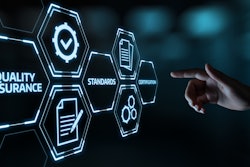
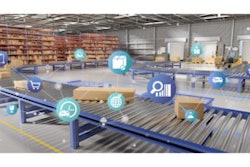




![Pros To Know 2026 [color]](https://img.sdcexec.com/mindful/acbm/workspaces/default/uploads/2025/08/prostoknow-2026-color.mduFvhpgMk.png?ar=16%3A9&auto=format%2Ccompress&bg=fff&fill-color=fff&fit=fill&h=135&q=70&w=240)


